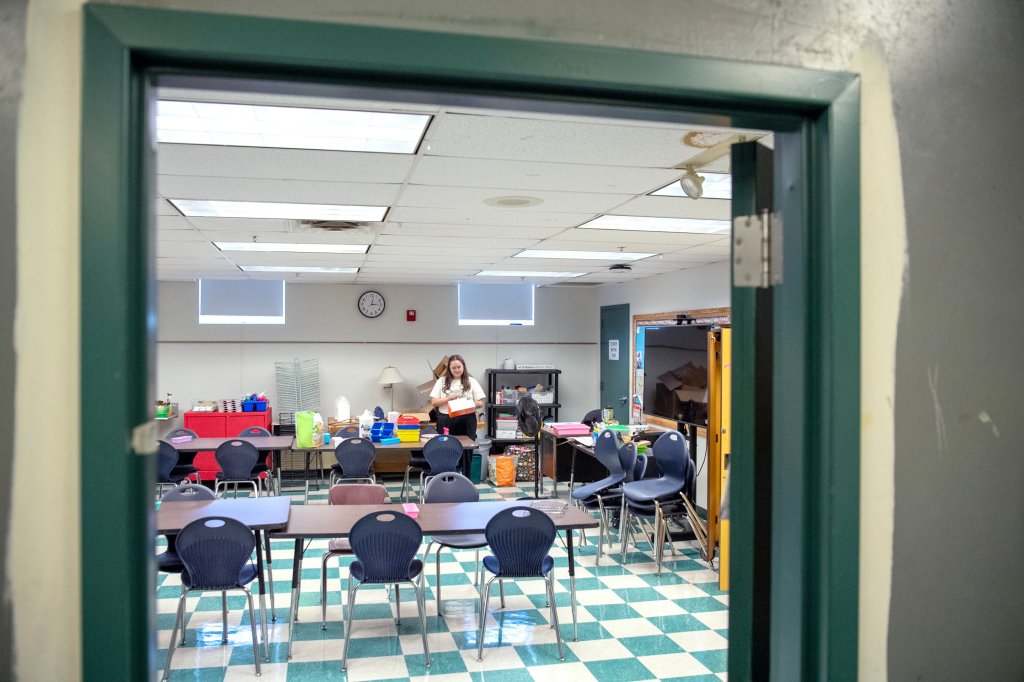
Every year in Maine, the gap widens between the number of schools that need to be replaced and the funding available to build them. Amid a period of aging infrastructure, rising costs and declining enrollment, the state is reconsidering its school construction funding system.
The Press Herald published a piece this week examining the issue and possible solutions.
Here are five takeaways from that story:
1. Most Maine schools were built in the 1950s, ’60s and ’70s
Due to the post-World War II population boom and a 1957 law that required small Maine school districts to consolidate, more than 50% of all school buildings in use today were built during those three decades. That means most of Maine’s schools are reaching the end of their functional life around the same time. A report from April estimated that 500 of the state’s 600 schools will need to be replaced in the next 20 years, at a cost of $11 billion.
2. The cost to build a school has dramatically increased
In the 1990s, the cost to build a new school was $100 per square foot. Now, it’s $600. That means a new school building could run as high as $150 million. But the state’s available funding for school construction has not kept up with that increase, so fewer schools get built during each funding cycle.
3. Deferred maintenance compounds problems
Generally speaking, infrastructure gets more expensive to repair as it ages. Many schools apply temporary fixes as they continue to degrade, waiting on the state’s very limited pool of capital project funds for major updates. And when a school falls behind on maintenance, the repairs become even more expensive.
4. The biggest issues at most schools are below the surface
Failing boilers, leaking AC systems, lack of wheelchair accessibility, wooden buildings with no sprinkler system, ancient portable classrooms — these are the biggest problems at many of Maine’s school buildings next in line to be replaced. The schools don’t necessarily look dilapidated, but as one superintendent put it, their functionality has just gone down.
5. Declining enrollment will likely necessitate consolidation
Maine has 35,000 fewer students than it did three decades ago, and that number continued to decline. The state isn’t keen to rebuild small schools that are half full. Consolidating them into a larger school with more resources is a good option, and something the state is considering incentivizing, but communities are often resistant to losing their neighborhood schools.

We invite you to add your comments. We encourage a thoughtful exchange of ideas and information on this website. By joining the conversation, you are agreeing to our commenting policy and terms of use. More information is found on our FAQs. You can modify your screen name here.
Comments are managed by our staff during regular business hours Monday through Friday as well as limited hours on Saturday and Sunday. Comments held for moderation outside of those hours may take longer to approve.
Join the Conversation
Please sign into your CentralMaine.com account to participate in conversations below. If you do not have an account, you can register or subscribe. Questions? Please see our FAQs.